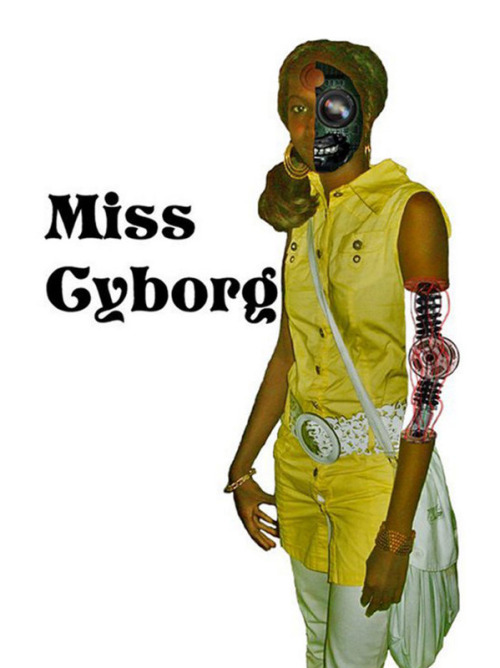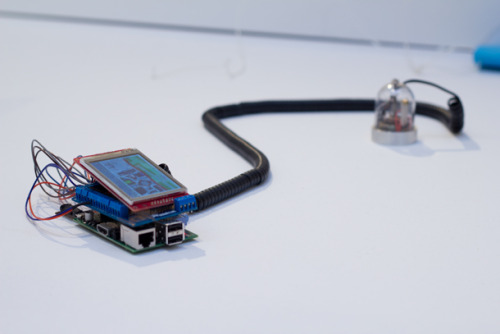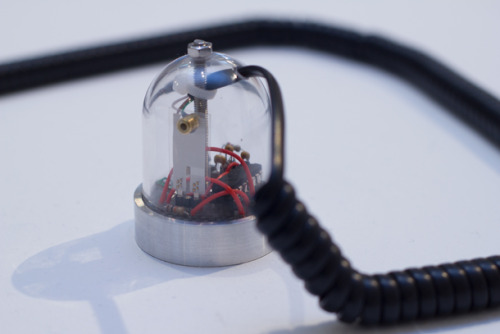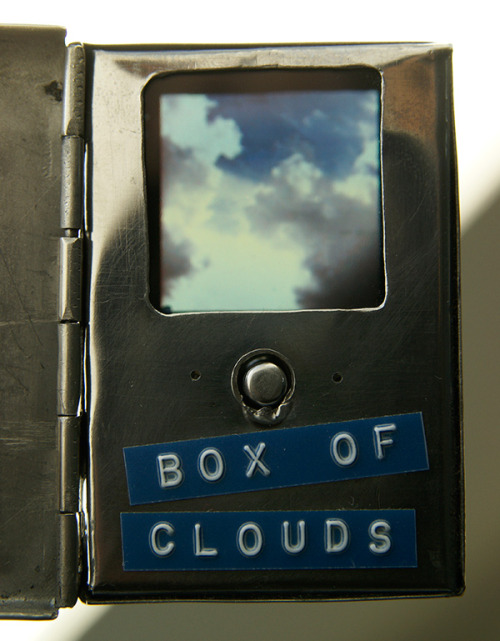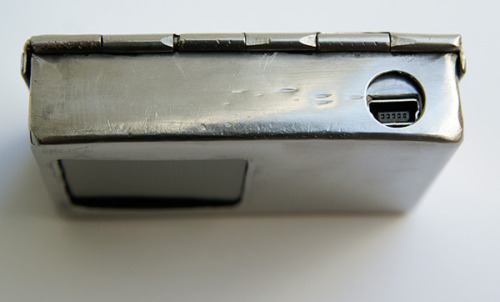Two major inputs for this post are ‘What Technology Wants‘ by Kevin Kelly and Matt Ward’s blog piece on the fate of things to come. I suggest you read both, as this post is essentially an illustration of my thoughts after reading.
To some extent, every designer is responsible for defining the future, often with lofty ambition. The glorious thing about the future is just how many permutations there are for any given algorithm. Matt has generated an excellent lexicon for the ways in which designers approach this issue, which in turn has helped me crystalise a larger geometric visualization.
The cone of possibility. Stretching ahead of us is the fog of the future. Everything implausable, impossible, mundane and extraordinary. Every tiny change to an existing product, every huge stride in the evolution of mankind. Within this everything-ness sits what I’m calling a ‘cone of possibility’ (I’ll refer to it throughout as the CPo). Undertaking research and articulating it requires days, weeks, months or years. More time allows for space for investigation, the making of mistakes, experimentation and learning. If we look forward a few weeks, what is possible might be quite restricted, if we give ourselves a month, more things may be possible, a couple of years and the realm of possibility widens still. The further we look forward, the more things become possible, hence a cone.

Fuzzy boundaries, wobbly edges. Ask a room of 100 engineers what’s possible and you’ll get 100 different answers. At the edge of possibility there is R&D, the aim of which is to clarify the fuzzy boundary between possible and impossible. The fact remains that the edges of the CPo are not crisp. The cone is more akin to a flashlight beam, the edges gradually attenuating into the darkness. Also, the edges of this fuzzy cone are not straight. During any research exercise there are moments of epiphany, moments of discovery and wild, rapid learning. The conic angle at any given point defines our field of opportunity, and it will distort and bulge based on a number of external factors. If we invest heavily in R&D it’s likely that the cone will expand at a quicker rate, inversely if we cut time and funding for R&D it may narrow to a wormhole. It would be very interesting to try and understand what constrains the CPo, be it investment, global politics, corporate focus, risk or similar. For the sake of simplicity the diagram will remain as drawn.
Out of scope. At any given moment there will be work which falls outside of the cone, in the realm of impossibility (or perhaps implausibility?). Kelly states that a microwave could not have been created in 1650, no matter how strong the volition, but if we extended the CPo forwards for 350 years, then the microwave eventually becomes possible. Paraphrasing Kelly’s argument: technology ‘always exists’ and we simply need to take sequential steps to ‘discover’ it, like the sculptor facing a block of marble. What’s important here is that innovation is apparently chronological, it requires things to be discovered, manufactured and launched in a particular order. Innovation is a parade.

(Note: there are things which may be considered perpetually impossible, such as time travel, teleportation or immortality. Perhaps the realm of impossibility should be referred to at the ‘perceptually impossible’, with another ‘physically impossible’ cone surrounding it…)
The cone of probability (CPr). Along the temporal axis lies another, narrower cone. This is the cone of probability (CPr). It defines what is likely to happen, given the current state of things. This is the world of yearly cycles and refreshed models, it’s therefore typically the world of large, slow organizations. Take the car industry: it has a limitless, somewhat sickly supply of concept projects which tug at the periphery of the CPo, but the cars we see in the showroom change slowly and almost predictably, as the weight of risk bears heavily on the organization. Anyone who has spent any time at a large technology or design organisation knows that there is an understood progression to things. The artifacts launched at this year’s CES seem almost natural in their arrival, inevitable even. Things get thinner, faster, lighter, brighter, longer… that’s the way we progress. Large organisations often refer to this as the innovation roadmap, which exhibits gradual evolution by its very nature. A concept which falls outside the CPr needs investment, both of time and money. Such a concept is new, potentially risky and might not be understood or accepted by customers. I hate to think of this as a risk model, but in some cases, we could view it as such.

We should remember that there is also risk associated with staying in the CPr. Apple has made a huge success of late by pulling products such as the iPhone and iPad from hazy R&D towards accepted norm with rapid speed, leapfrogging the normal progression of things. This creates a significant destabilising force on the CPr, making yearly planning, portfolio development and growth strategies almost impossible.
As I’ve been visualising this,cone, moving through space, swallowing peripheral innovation and funneling it to the centre, I’ve been seeing a trawlers net. This is a break in proceedings to enjoy a good visual metaphor.

Towards a Vinge singularity. Based on this model, knowledge typically follows a path from the realm of impossibility, through the hazy outskirts of the CPo and into the safe central core of the CPr. Products which we consider simple to the point of banality often contain long forgotten research and development, forming a ‘collective knowledge’ in the minds of designers and makers. This is excellently illustrated by Thomas Thwaites in his attempt to build a toaster, and a core tenet of the Near Future Laboratory ‘convenience’ work. This central core is what forms the backbone of contemporary and future artifacts. The accumulated knowledge of processing, electronics, materials manufacturing, user interaction and engineering are all to be found here, layered upon wood carving, thatching and stonemasonry. As the current moment passes the cone model leaves behind it a trail of artifacts, each of which embody these successive generational learnings. Like the rings of a tree, knowledge accretes around this central axis, bumping up against it’s predecessor and squeezing together into a super-dense core.
Question: if we use the astrophysical model to it’s conclusion, could packets of knowledge be squeezed out through an innovation black hole? Could this act as a metaphor for lost knowledge or techniques?

Using the model. This is still very basic and has a few flaws, but in crystalising my thoughts it has proved useful in order to begin mapping some of the projects with which I’m engaged. It’s handy to sketch the model to get agreement on what parts of the project fit where. In advanced design, we’re often tugging at the edges of the CPo and CPr in parallel, and it’s important to understand the distinction. I would argue that Critical Design, as embodied by practitioners such as Dunne and Raby sits as a skin around the CPr, poking holes in the assumed logical future (Affirmitive Design). When we are required to undertake a project which falls into a particular cone, it could be useful to re-situate the project in the other cone. This is a familiar consultancy technique, the ‘long’ and ‘short’ term or the ‘safe’ and ‘risky’ option. I guess this just adds some new language: the ‘possible’ and ‘probable’.
The cones model is also useful in a comparison mode to understand just how the organisation for which we’re working fits with competitors. Is our CPo wider or narrower than our competition? How many of our projects sit within the safe CPr, and how many sit further out? What is our balance of innovation. Pushing the model further, we could understand how future innovations may distort the cones and how this may affect the innovation parade, a classic ‘what if’ exercise. We could also look at our organisation and calculate the proportional balance of the two cones. Are we converting enough ‘possibles’ into ‘probables’? for example.
One interesting aspect of this model it playing with temporality. As the cones move forward through space they leave a trail of knowledge and artifacts behind them. Returning to these artifacts after they pop into existence is tough. A phrase we’re increasingly seeing is ‘it’s hard to ship atoms in beta’. That’s to say: the working methods in software development which allows for redeployment, modifications and development after launch, are very difficult to apply to the realm of mass manufactured 3D objects. This model perhaps most vividly captures the march of progress, and the passing of objects. Let me know if you find it interesting, useful, flawed or in error.









